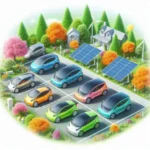As the automotive industry continues to evolve at a breakneck pace, 2023 is proving to be a landmark year for car technology, redefining the way we experience driving.
From advanced driver-assistance systems to cutting-edge infotainment interfaces, the latest innovations are not only enhancing safety and convenience but also transforming our vehicles into smart, connected companions. Whether you’re a tech enthusiast eager to explore the latest gadgets or a car lover interested in how these features impact your daily commute, this blog post delves into the most exciting car technology trends of 2023. We’ll explore features that improve efficiency, elevate driving experiences, and integrate seamlessly with our digital lives, ensuring that you’re not just driving a car, but enjoying an extraordinary ride. Buckle up as we rev up your ride and take a closer look at the future of automotive technology!
1. Introduction to the Future of Automotive Technology
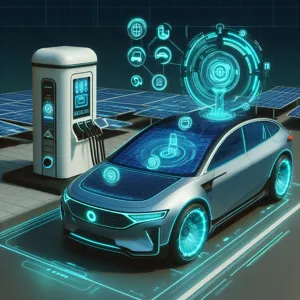
As we accelerate into 2023, the landscape of automotive technology is undergoing a remarkable transformation, reshaping not just how we drive, but how we interact with our vehicles. The convergence of advanced engineering, artificial intelligence, and sustainability has paved the way for innovations that promise to enhance safety, efficiency, and the overall driving experience. Imagine a world where vehicles communicate seamlessly with one another and their environment, where autonomous driving is not just a dream but a practical reality, and where every ride is optimized for comfort and connectivity.
This year, car manufacturers are unveiling an impressive array of features designed to cater to the modern driver’s needs. From cutting-edge infotainment systems that integrate with our daily digital lives to electrification trends that support a more sustainable future, automotive technology is not just about speed and power, but about creating a holistic driving experience.
In this blog post, we will delve into the most exciting advancements in car technology for 2023, exploring features such as enhanced driver-assistance systems, state-of-the-art connectivity options, and eco-friendly innovations that are redefining the way we think about our vehicles. Buckle up as we embark on this journey into the exciting future of automotive technology, where the possibilities are as limitless as the open road ahead.
2. Overview of Key Trends in 2023 Car Technology
As we navigate through 2023, the automotive industry is witnessing a remarkable transformation driven by innovative technology trends that are reshaping the driving experience. From electric vehicles (EVs) to enhanced connectivity, here’s a closer look at some of the most impactful trends you can expect to see this year.
**1. Electrification and Sustainable Mobility:** The shift towards sustainable transportation has accelerated, with more manufacturers embracing electric and hybrid vehicles. This year, we’re seeing an influx of new models that not only offer impressive range and performance but also feature advanced battery technologies that reduce charging times significantly. Consumers are increasingly prioritizing eco-friendly options, and automakers are responding with models that combine sustainability with luxury and style.
**2. Advanced Driver Assistance Systems (ADAS):** Safety continues to be a top priority, and 2023 is no exception. Enhanced ADAS features, such as adaptive cruise control, lane-keeping assistance, and automated emergency braking, are becoming standard in many vehicles. These systems not only improve safety but also enhance the overall driving experience by reducing fatigue on long journeys, allowing drivers to enjoy the ride with added peace of mind.
**3. Connected Cars and Smart Technology:** The concept of the connected car is rapidly evolving, with vehicles becoming increasingly integrated with smartphones and smart home devices. In 2023, expect to see more cars equipped with over-the-air (OTA) updates, allowing manufacturers to remotely fix bugs and improve features without requiring a visit to the dealership. Furthermore, in-car infotainment systems are becoming more intuitive, offering seamless integration with apps and services, which helps keep drivers connected while on the road.
**4. In-Car Personal Assistants:** Voice-activated personal assistants are becoming more sophisticated, providing drivers with the convenience of hands-free operation. These systems can control navigation, make phone calls, and even adjust climate settings—all with simple voice commands. As artificial intelligence continues to advance, these personal assistants will likely become more adept at understanding individual preferences and predicting needs, enhancing the overall driving experience.
**5. Enhanced User Experience:** Automakers are placing a greater emphasis on user experience, focusing on interior design and technology that caters to driver comfort and convenience. Expect to see features like customizable ambient lighting, premium audio systems, and ergonomic seating that adapts to the driver’s posture. Additionally, augmented reality (AR) displays are starting to appear in some high-end models, providing drivers with real-time information projected onto the windshield, making navigation and driving assistance more intuitive.
As we dive deeper into 2023, these key trends in car technology signal a future where driving is not only safer and more efficient but also more enjoyable. Whether you’re considering a new vehicle or simply curious about what’s on the horizon, these advancements are sure to rev up your ride!
3. Advanced Driver Assistance Systems (ADAS)
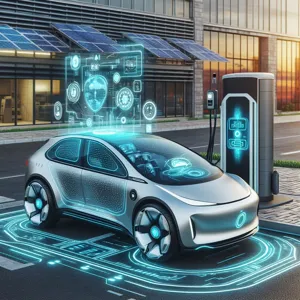
As we step into 2023, Advanced Driver Assistance Systems (ADAS) are not just a luxury but a vital component of modern vehicles, transforming the driving experience into one that prioritizes safety and convenience. These systems are designed to enhance vehicle safety by using a combination of sensors, cameras, and artificial intelligence to assist drivers in making informed decisions on the road.
One of the standout features of ADAS is lane-keeping assist, which uses sensors to detect lane markings and gently guides the steering to help drivers stay centered in their lane. This feature is particularly beneficial during long drives or in heavy traffic, reducing fatigue and minimizing the risk of unintentional lane changes.
Another remarkable innovation is adaptive cruise control, which automatically adjusts the vehicle’s speed to maintain a safe distance from the car ahead. Imagine cruising along the highway while your car seamlessly accelerates and decelerates, allowing you to enjoy the journey without the constant need to adjust the throttle.
Additionally, parking assistance systems have taken a giant leap forward. With 360-degree cameras and proximity sensors, these systems provide a bird’s-eye view of your surroundings, making parallel parking or navigating tight spaces a breeze. Some vehicles even offer fully automated parking features, where the car takes over the steering, braking, and accelerating, allowing you to sit back and relax.
Furthermore, the integration of emergency braking systems adds another layer of protection. These systems can detect potential collisions and automatically apply the brakes if the driver fails to respond in time, providing peace of mind in unpredictable situations.
As car manufacturers continue to innovate, features like pedestrian detection, blind-spot monitoring, and traffic sign recognition are becoming standard in many models. These technologies not only enhance safety but also foster a more relaxed driving experience, allowing you to focus on the road ahead while your vehicle takes care of the finer details. With advancements in ADAS, 2023 is truly a landmark year for automotive technology, promising safer and more enjoyable rides for everyone on the road.
4. Electric and Hybrid Vehicle Innovations
As the automotive landscape evolves, electric and hybrid vehicles are taking center stage, showcasing a remarkable array of innovations that redefine the driving experience. In 2023, manufacturers are not just enhancing the efficiency of these vehicles; they are also integrating cutting-edge technology that elevates performance, safety, and connectivity.
One of the most exciting advancements is the development of solid-state batteries, which promise to revolutionize energy storage. Unlike traditional lithium-ion batteries, solid-state batteries utilize a solid electrolyte, resulting in faster charging times, increased range, and improved safety. This technology is setting the stage for electric vehicles (EVs) to achieve unprecedented performance levels, making them a viable option for even the most discerning drivers.
Additionally, many electric and hybrid models are now equipped with intelligent energy management systems. These systems analyze driving patterns and environmental conditions to optimize battery usage, extending the vehicle’s range and enhancing efficiency. Imagine a car that learns your daily routes and adjusts its energy consumption accordingly; that’s the future we’re heading towards.
Another noteworthy feature is the integration of advanced driver-assistance systems (ADAS) specifically designed for electrified cars. These include adaptive cruise control, lane-keeping assist, and automated parking features that not only make driving easier but also enhance safety. With the rise of smart traffic management systems, some vehicles can even communicate with traffic lights to minimize stop-and-go traffic, further improving efficiency.
Moreover, the infotainment systems in these vehicles are becoming more sophisticated, offering seamless connectivity with smartphones and smart home devices. Imagine controlling your home thermostat or checking on your security cameras—all from your car’s dashboard. Voice recognition and AI-driven assistants are enhancing the user experience, making it easier to access information and entertainment while keeping your focus on the road.
In 2023, the innovations in electric and hybrid vehicles are not just about sustainability; they are about creating a more connected, efficient, and enjoyable driving experience. As these technologies continue to evolve, they pave the way for a future where eco-friendly vehicles are not only a responsible choice but also an exciting one. Buckle up as we embark on this technological journey, where the thrill of the ride meets the promise of a greener tomorrow.
5. Infotainment Systems: The Evolution of In-Car Entertainment
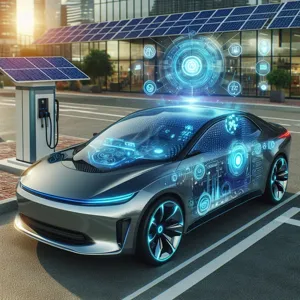
In 2023, infotainment systems have undergone a remarkable transformation, evolving from simple radio and CD players into sophisticated multimedia hubs that redefine the driving experience. These advanced systems integrate seamlessly with smartphones, offering drivers and passengers access to a plethora of entertainment options, navigation tools, and connectivity features—all designed to enhance convenience and enjoyment on the road.
At the heart of this evolution is the introduction of larger, high-resolution touchscreens that dominate dashboards. These displays are not only visually stunning, but they also provide intuitive interfaces that allow for easy navigation through various apps and functions. With just a swipe or a tap, users can access music streaming services like Spotify and Apple Music, listen to podcasts, or even watch videos—all while maintaining focus on the road ahead. Voice recognition technology has also made great strides, enabling drivers to control their infotainment systems hands-free. Simply saying “play my road trip playlist” or “navigate to the nearest coffee shop” can eliminate the need to fumble with buttons or screens, creating a safer driving environment.
Moreover, many of the latest infotainment systems now come equipped with artificial intelligence (AI) that learns user preferences over time. For instance, the system might recognize your favorite routes and suggest them automatically or offer personalized music playlists based on your listening habits. This level of customization not only enhances user satisfaction but also makes every drive feel uniquely tailored to individual tastes.
Additionally, 2023 has seen the rise of integrated vehicle-to-everything (V2X) communication features within infotainment systems. This technology allows vehicles to communicate with each other and with infrastructure, enhancing safety and efficiency. For example, your car can alert you about traffic signals, road hazards, or even nearby vehicles, providing invaluable information that can help avoid accidents or delays.
As manufacturers continue to innovate, the infotainment system remains a focal point in the race to enhance the driving experience. With the perfect blend of entertainment, connectivity, and safety features, the infotainment systems of 2023 are not just about keeping you entertained; they are an integral part of a modern, connected lifestyle on the go. Whether you’re commuting to work or embarking on a cross-country adventure, these cutting-edge systems ensure that every journey is as enjoyable as it is safe.
6. Connectivity Features: Integrating Smartphones and Vehicles
In today’s fast-paced digital world, connectivity has become a cornerstone of the driving experience. The latest car technology features of 2023 are all about seamlessly integrating smartphones with vehicles, transforming how we interact with our cars. No longer are we merely passengers; we are connected drivers, fully immersed in a digital ecosystem that enhances safety, convenience, and entertainment.
This year, manufacturers are stepping up their game with advanced systems that allow for effortless smartphone integration. With platforms like Apple CarPlay and Android auto, drivers can now sync their devices with their vehicle’s infotainment system in mere moments. This integration goes beyond just mirroring apps on a screen; it allows for seamless access to navigation, music, messaging, and even voice commands, ensuring that drivers can stay connected without sacrificing safety. Imagine navigating through traffic with real-time updates or enjoying your favorite playlist with the touch of a button—all while keeping your hands on the wheel and your eyes on the road.
Moreover, many of the latest vehicles in 2023 feature built-in cellular connectivity, turning cars into mobile hotspots. This allows passengers to connect their devices to the internet for streaming, browsing, or even working on the go. Families can enjoy animated movies on long road trips, and business professionals can attend virtual meetings from the comfort of their back seats.
Additionally, manufacturers are introducing more sophisticated app ecosystems that enable remote access to vehicle features. Through dedicated apps, owners can check their fuel levels, unlock their doors, or even start their engines from afar, adding a layer of convenience to everyday life. Smart notifications alert drivers about maintenance needs or even if they’ve left their car doors ajar, ensuring peace of mind wherever they go.
As we embrace these cutting-edge connectivity features, it’s clear that 2023 is ushering in a new era of driving—a time when your car is not just a mode of transportation, but an extension of your digital lifestyle. With technology that fosters engagement, safety, and convenience, the ride becomes not just about the destination, but about the joy of journeying through a connected world.
7. Enhanced Safety Features: Keeping You and Your Passengers Protected
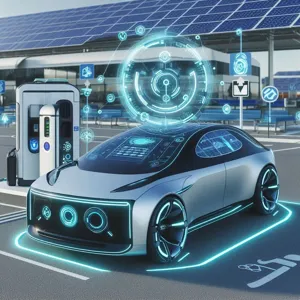
In the realm of automotive innovation, safety remains paramount, and the latest car technology features of 2023 have taken this commitment to new heights. Enhanced safety features are now more sophisticated and intuitive than ever, ensuring that both drivers and passengers are protected on every journey.
One of the standout advancements is the integration of AI-driven collision avoidance systems. These smart technologies utilize sensors and cameras to monitor the vehicle’s surroundings, detecting potential hazards in real-time. Whether it’s a pedestrian darting into the street or an unseen car merging into your lane, these systems can alert you and, in some cases, even take over the steering or braking to prevent accidents before they happen.
Additionally, 2023 models boast improved lane-keeping assistance that goes beyond simple alerts. With advanced steering capabilities, these systems can gently guide your vehicle back into its lane if you begin to drift, making highway driving safer and more relaxed. Coupled with adaptive cruise control that adjusts your speed based on the vehicle ahead, the driving experience has become not only safer but also more enjoyable.
Another remarkable feature making waves this year is the introduction of 360-degree camera systems. Providing a bird’s-eye view of your vehicle’s surroundings, these cameras eliminate blind spots and aid in parking, allowing you to navigate tight spaces with confidence. This technology is especially beneficial in urban environments where space is at a premium.
Moreover, the inclusion of emergency response systems ensures that help is always just a button away. In the event of a collision, many new vehicles are equipped to automatically call emergency services, providing essential information about your location and the severity of the incident, thus expediting response times and potentially saving lives.
With these enhanced safety features, 2023 vehicles are not just about luxury and aesthetics; they serve as guardians on the road, prioritizing the well-being of everyone on board. As technology continues to evolve, the future of driving looks safer than ever, giving drivers peace of mind as they rev up their rides.
8. Autonomous Driving: Current Developments and Future Prospects
As we delve into 2023, the realm of autonomous driving converges on the cusp of a technological revolution. With every passing year, vehicles are becoming increasingly capable of navigating our roads without direct human intervention, thanks to significant advancements in artificial intelligence, sensor technology, and machine learning. The excitement surrounding autonomous vehicles (AVs) is palpable, with automakers and tech giants alike racing to bring the ultimate self-driving experience to consumers.
Currently, many vehicles are equipped with Level 2 and Level 3 automation features, allowing for a blend of driver assistance and automated driving in specific conditions. For instance, Tesla’s Autopilot and GM’s Super Cruise are at the forefront, enabling hands-free highway driving while still requiring driver supervision. These systems harness an array of cameras, radar, and ultrasonic sensors to interpret the surrounding environment, making real-time decisions to ensure safety and efficiency.
But what does the future hold for autonomous driving? Increasingly, research is focused on achieving Level 4 and 5 automation, where vehicles can operate independently in most conditions without any human oversight. Companies like Waymo and Cruise are making strides in urban environments, deploying self-driving taxis that navigate complex city streets while tackling challenges such as pedestrian interactions and unpredictable traffic patterns.
Moreover, the integration of advanced connectivity features, such as Vehicle-to-Everything (V2X) communication, is set to enhance the capabilities of autonomous vehicles. By enabling cars to communicate with each other and infrastructure, we can anticipate traffic flow, reduce accidents, and optimize routes, making the roads safer and more efficient for everyone.
As we look ahead, the widespread adoption of autonomous driving technology is likely to transform our transportation landscape. While regulatory hurdles and public acceptance remain key challenges, the potential benefits—reduced traffic congestion, lower accident rates, and increased mobility for those unable to drive—paint a promising picture for the future of our rides. In this rapidly evolving field, it’s clear that 2023 is just the beginning of an exhilarating journey toward a more autonomous and connected driving experience.
9. Performance Enhancements: Turbocharging and Engine Technology
In 2023, the automotive industry continues to push the boundaries of what’s possible under the hood, and one of the most exciting areas of innovation is in performance enhancements, particularly turbocharging and advanced engine technology. Gone are the days when powerful engines meant sacrificing fuel efficiency; today’s turbocharged engines offer the best of both worlds. By forcing more air into the combustion chamber, turbochargers enable smaller engines to produce the power of larger ones, leading to exhilarating acceleration without the hefty fuel consumption.
Modern turbocharging technology has evolved significantly. Variable geometry turbochargers (VGT) and twin-scroll designs are now commonplace, optimizing airflow and minimizing lag, resulting in a seamless driving experience. This means that drivers can enjoy a responsive ride with immediate throttle response, whether they’re merging onto the highway or navigating city streets.
Additionally, automakers are investing in innovations like hybrid turbo systems that combine traditional turbocharging with electric motors. This hybrid approach not only boosts performance but also enhances efficiency, allowing for a greener drive without compromising on power. These advancements in engine technology are complemented by sophisticated engine control units (ECUs) that fine-tune performance in real-time, adapting to driving conditions and driver behavior.
Car enthusiasts and everyday drivers alike are reaping the rewards of these technological leaps. With improved torque delivery and higher horsepower ratings, vehicles are becoming more capable on and off the road. Whether you’re eyeing a sporty sedan or a rugged SUV, the performance enhancements available in 2023 highlight a commitment to engineering excellence. So buckle up and get ready to experience the thrill of driving as modern technology revs up your ride!
10. Sustainable Materials and Eco-Friendly Technologies in Cars
As the automotive industry embraces a more environmentally conscious future, 2023 has marked a significant shift towards sustainable materials and eco-friendly technologies in car manufacturing. Today’s vehicles are not only designed for performance and aesthetics but also for their impact on the planet. Car manufacturers are increasingly prioritizing the use of recycled and renewable materials, which not only reduces waste but also minimizes the carbon footprint associated with vehicle production.
One of the most exciting advancements is the integration of recycled plastics, which are being utilized in everything from interior trims to dashboard components. Manufacturers are sourcing materials from discarded ocean plastics and repurposing them, demonstrating a commitment to sustainability while maintaining high standards of quality and durability. Additionally, natural fibers such as hemp, bamboo, and even recycled cotton are making their way into car interiors, providing a touch of luxury while being environmentally friendly.
Beyond materials, eco-friendly technologies are also reshaping the driving experience. Many 2023 models are equipped with advanced energy-efficient systems, such as regenerative braking and hybrid-electric drivetrains, which help reduce fuel consumption and lower emissions. Furthermore, cutting-edge innovations like solar panels integrated into vehicle roofs are beginning to appear, offering an additional source of energy to power various onboard systems, thus enhancing overall efficiency.
Incorporating sustainable practices goes beyond just the vehicles themselves; many manufacturers are also focusing on sustainable production processes. This includes reducing water usage, lowering energy consumption, and minimizing waste throughout the manufacturing lifecycle. By prioritizing sustainability, car manufacturers are not only appealing to eco-conscious consumers but are also setting a precedent for the rest of the industry.
As we rev up our rides in 2023 and beyond, the emphasis on sustainable materials and eco-friendly technologies signals a promising shift towards a greener future in automotive design, ensuring that our love for innovation and performance does not come at the expense of our planet.
11. The Rise of Over-the-Air Software Updates
In the fast-evolving landscape of automotive technology, the rise of over-the-air (OTA) software updates is transforming how we interact with our vehicles. Gone are the days when upgrading your car’s software required a visit to the dealership or a lengthy wait for a technician. In 2023, manufacturers are harnessing the power of connectivity to deliver updates directly to your vehicle, much like how smartphones receive new features and security patches.
This revolutionary capability offers a multitude of benefits. For starters, OTA updates enable manufacturers to fix bugs, enhance performance, and even introduce new features without requiring the owner to leave their driveway. Imagine waking up to a car that has improved fuel efficiency or a revamped infotainment system, all thanks to a seamless overnight update. This not only boosts the longevity of the vehicle but also ensures that your ride is always equipped with the latest technology and safety features.
Furthermore, OTA updates allow for a more personalized driving experience. As automakers gather data on user preferences and behaviors, they can tailor updates to individual drivers, optimizing features like navigation, climate control, and even driving modes to enhance comfort and convenience. This level of customization creates a deeper connection between the driver and the vehicle, fostering brand loyalty and satisfaction.
However, the rise of OTA updates isn’t without its challenges. Security concerns loom large, as the increased connectivity can potentially expose vehicles to hacking and unauthorized access. Manufacturers are investing heavily in robust cybersecurity measures to safeguard against these threats, ensuring that the convenience of OTA updates does not come at the cost of safety.
As we look ahead, it’s clear that over-the-air software updates are set to become a standard feature in the automotive industry. They represent a shift towards smarter, more responsive vehicles that not only keep pace with technological advancements but also enhance the overall ownership experience. In 2023 and beyond, embracing this innovation will be key for drivers looking to rev up their ride with the latest in-car technology.
12. User Experience: Customizable Dashboards and Interfaces
In the fast-evolving world of automotive technology, the user experience has taken center stage in 2023, with an exciting array of customizable dashboards and interfaces that cater to the unique preferences of each driver. Gone are the days of one-size-fits-all displays; today’s vehicles offer a wealth of options that allow drivers to tailor their in-car experience to suit their personal style and needs.
Imagine stepping into your vehicle and being greeted by a dashboard that feels uniquely yours. With the latest advancements, drivers can adjust everything from the layout of their instrument clusters to the color schemes of their displays. Want a sleek, minimalist look with essential information front and center? Or perhaps you prefer a vibrant, tech-inspired interface that showcases a wealth of data at a glance? The choice is yours.
Many manufacturers are now integrating advanced touchscreens that respond intuitively to gestures, making navigation through menus smoother and more engaging. Some systems even employ artificial intelligence to learn your habits over time, suggesting the shortcuts and features you use most frequently. This means that whether you’re accessing your music library, checking navigation, or adjusting climate controls, the interface adapts to you, making every drive more enjoyable and efficient.
Furthermore, the latest vehicles are enhancing connectivity options, allowing seamless integration with smartphones and other devices. Drivers can easily customize their settings through apps, enabling them to adjust features even before they get behind the wheel. This level of personalization not only enhances comfort but also fosters a deeper connection between the driver and their vehicle, creating an experience that feels distinctly personal.
As we delve into the world of 2023 car technology, it’s clear that customizable dashboards and interfaces are more than just a trend; they represent a fundamental shift toward an individualized driving experience where technology meets personal preference. With these innovations, every journey becomes a reflection of who you are, making your ride not just a mode of transportation, but a personalized sanctuary on wheels.
13. Future Predictions: What’s Next for Car Technology?
As we stand on the brink of a new era in automotive innovation, the future of car technology promises to be as exhilarating as it is transformative. The advancements we’ve seen in 2023 are just the beginning, paving the way for a host of exciting possibilities that will revolutionize how we think about driving and vehicle ownership.
One of the most anticipated developments is the continued evolution of autonomous driving systems. While many cars today boast impressive driver-assistance features, the next wave will focus on fully autonomous capabilities. Imagine a world where you can sit back and relax while your vehicle navigates through traffic, parking itself seamlessly, and delivering you to your destination without lifting a finger. Companies are investing heavily in AI and machine learning to refine these systems, aiming for a level of safety and reliability that will make autonomous driving not just a dream, but a commonplace reality.
Another area poised for growth is the integration of augmented reality (AR) into car displays. Imagine your windshield transforming into a high-tech interface that overlays crucial information directly onto your view of the road. From navigation prompts that guide you turn by turn, to real-time alerts about potential hazards, AR technology will enhance situational awareness, making driving safer and more intuitive.
Electric vehicles (EVs) will also see significant advancements in battery technology, leading to longer ranges and faster charging times. The race is on to create batteries that can be charged in mere minutes rather than hours, alleviating one of the biggest concerns for potential EV buyers. Furthermore, with the increasing availability of charging stations and the development of wireless charging technologies, owning an electric vehicle will become more convenient than ever.
Connectivity will remain at the forefront, with vehicles becoming even more integrated with smartphones and smart home devices. Picture a car that not only responds to your voice commands but also learns your preferences over time, adjusting seat positions, climate control, and entertainment options to create a truly personalized driving experience.
As we look ahead, the fusion of sustainability and technology will drive innovation. Expect to see more manufacturers embracing eco-friendly materials and processes, as well as exploring alternative energy sources, such as hydrogen fuel cells. The automotive industry is not just about getting from point A to point B anymore; it’s about doing so in a way that respects our planet.
In summary, the future of car technology is bright, filled with possibilities that will redefine our driving experience. From autonomous vehicles and augmented reality to enhanced connectivity and sustainable practices, the innovations on the horizon promise to not only rev up our rides but also reshape our relationship with transportation in the years to come. Buckle up; the journey into the future is just getting started!
14. Conclusion: Embracing the Technological Revolution in Automotive Industry
As we conclude our exploration of the latest car technology features of 2023, it’s clear that the automotive industry is undergoing a remarkable transformation. The integration of cutting-edge technologies is not just enhancing the driving experience; it’s revolutionizing the very essence of mobility. From advanced driver-assistance systems (ADAS) that prioritize safety to intuitive infotainment systems that keep us connected, today’s vehicles are more than just modes of transportation—they are smart, responsive, and increasingly autonomous.
The advancements in electric vehicle (EV) technology are particularly noteworthy, as they not only promise a greener future but also deliver impressive performance metrics that challenge traditional gasoline-powered cars. The growing prevalence of over-the-air updates ensures that your vehicle continues to evolve long after you’ve driven it off the lot, keeping it at the forefront of innovation.
Moreover, features like augmented reality dashboards and voice-activated controls are creating an immersive driving environment that enhances convenience and safety. As manufacturers continue to push the envelope, consumers are presented with a plethora of options tailored to their preferences and lifestyles.
Embracing this technological revolution is not just about keeping up; it’s about enhancing your driving experience, ensuring your safety, and enjoying the ride like never before. As we move forward, it’s essential to recognize the potential of these innovations, not only to improve our vehicles but also to reshape the future of transportation. So, whether you’re a tech enthusiast or simply a curious driver, stay tuned—because the best is yet to come in the automotive world.
15. Resources for Staying Updated on Car Technology Trends
In an ever-evolving automotive landscape, staying updated on car technology trends is not just beneficial; it’s essential for car enthusiasts, buyers, and industry professionals alike. The rapid pace of innovation can be overwhelming, but a wealth of resources is available to help you navigate the latest advancements in automotive technology.
One of the best places to start is online automotive news websites, such as Car and Driver, Motor Trend, and Autotrader. These platforms provide timely articles, in-depth reviews, and expert opinions on the latest car models and their technological features. Subscribing to their newsletters can ensure that you receive regular updates directly to your inbox.
For those who prefer a more interactive approach, podcasts and YouTube channels dedicated to automotive technology offer engaging discussions and visual demonstrations. Channels like Engineering Explained and the Everyday Driver Podcast delve into the specifics of new technologies, making complex concepts accessible to all. These platforms often feature interviews with industry experts and real-world tests of new features, giving you a well-rounded understanding of what’s available.
social media is another powerful tool for staying connected with car technology trends. Follow automotive influencers, manufacturers, and technology companies on platforms like Instagram, Twitter, and LinkedIn. These accounts frequently share breaking news, sneak peeks of upcoming models, and insights into the latest technological innovations.
Lastly, attending automotive trade shows and expos, such as the Consumer Electronics Show (CES) and the North American International Auto Show (NAIAS), provides firsthand experience with cutting-edge technology. These events showcase the latest advancements and allow you to interact with industry leaders and experts, deepening your understanding of where car technology is headed.
By leveraging these resources, you can stay informed about the latest car technology trends, ensuring you’re always ahead of the curve and ready to rev up your ride with the best that 2023 has to offer.
As we wrap up our exploration of the latest car technology features of 2023, it’s clear that the automotive industry is evolving at an exhilarating pace. From advanced safety systems and intuitive infotainment interfaces to eco-friendly innovations and autonomous driving capabilities, these groundbreaking advancements are not just enhancing the driving experience, but also redefining what it means to be on the road. Whether you’re a tech enthusiast, a safety-conscious parent, or simply someone who loves the thrill of driving, there’s something in this new wave of automotive technology for everyone. We encourage you to stay informed and curious as you navigate this dynamic landscape, and consider how these features can elevate your own driving experience. Thank you for joining us on this journey—here’s to embracing the future of driving and revving up your ride!


